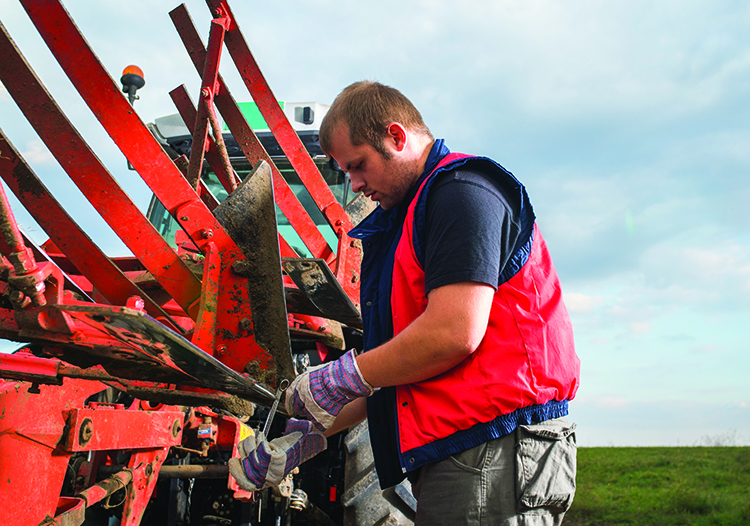
Like many employed in an agriculture career, custom manure applicators find themselves working long hours and in stressful situations. When the pressure is on, it is easy to want to cut corners to get the job done, but these shortcuts can sometimes mean the difference between life and death.
A vital component of any manure applicator training or certification program is a focus on safety. As part of the Minnesota Department of Agriculture’s Commercial Animal Waste Technician applicator training, Rick Martens, executive director of the Minnesota Custom Applicators Association, covered this critical topic.
“Keep safety in mind at all times,” said Martens, who also owns and operates a custom application business. “Each type of equipment has special features that require special attention.”
He started out by discussing pinch points and moving parts. For instance, liquid applicators may have wings that fold up for safe transportation, and solid manure spreaders can have moving end gates and rotating beaters.
“There are many ways that fingers or other body parts can be pinched and crushed, or clothing may be caught,” he noted. “Don’t put your fingers where they don’t belong.”
During maintenance, Martens said to always turn off the equipment and block it securely to avoid being crushed.
A device that has caused many tragic accidents is the power take-off, or PTO. Found on many manure hauling implements, this is an area where Martens said to stay alert and use extreme caution. Injuries that can be caused by PTOs include fractures, lacerations, spinal cord damage, amputations, and sometimes death.
To illustrate the sheer power of a PTO, Martens shared that a PTO shaft with a 3-inch diameter spinning at 540 rotations per minute (rpm) travels 7 feet in just one second. At 1,000 rpm, it travels 13.1 feet per second.
A safety feature of a PTO is the protective shield, and Martens said to keep the shield in place and in good working order. “Shields that become damaged should be replaced,” he advised. “A replacement shield costs $100, which is a bargain compared to any accident you may face when working with a broken or missing shield.”
He said to never step over a PTO shaft that is not covered by a shield. “It’s not worth the risk to step over a PTO shaft . . . ever. Walk around the equipment,” he emphasized.
When working with PTOs, Martens said to focus on what you are doing. Don’t wear loose clothing or clothes with ragged edges, and remove strings, such as those on hooded sweatshirts. Stand away from the shaft and look for others, especially children and animals, before turning on the machinery. Again, he said to turn off all equipment before performing maintenance.
Hydraulic oil and hoses create another potential safety hazard. “The main concern with hydraulic hoses is that they can be very hot, and the oil running through them is very hot,” Martens explained.
In addition, the oil in the hoses is under high pressure. Even a small leak the size of a pinhole can cause dangerous fluid to spray out with such force it can cut the skin, and it can also cause chemical burns. This is a huge risk to hands, eyes, and skin, Martens shared.
If a hole in a hose is suspected, Martens said to never use your hands to feel for the leak. This may result in hydraulic oil being injected into your body.
Working around the clock
Martens recognized the challenges manure applicators face.
“Today, our equipment is getting faster, application styles are changing, and we need to keep pace with that,” he said. “The pressure is on for us to get more done in a shorter amount of time.”
This time crunch raises the risk for accidents and injury, but he also reminded that accidents can happen even when working under favorable conditions.
“People are people. We make mistakes. We forget things. We do things in the wrong order. We do things we shouldn’t do. We get distracted. We get overloaded,” he said.
He emphasized that safety is an ongoing effort. In addition to regular safety training and routine maintenance of equipment, he encouraged applicators to wear the proper gear. This includes good boots, gloves, long pants and sleeves, safety glasses, and hearing protection.
Ultimately, Martens said that most accidents are preventable.
“Prepare, stop, think, and then react,” he stated. “We don’t want you to become a statistic.”
This article appeared in the August 2021 issue of Journal of Nutrient Management on pages 20 and 21. Not a subscriber? Click to get the print magazine.









